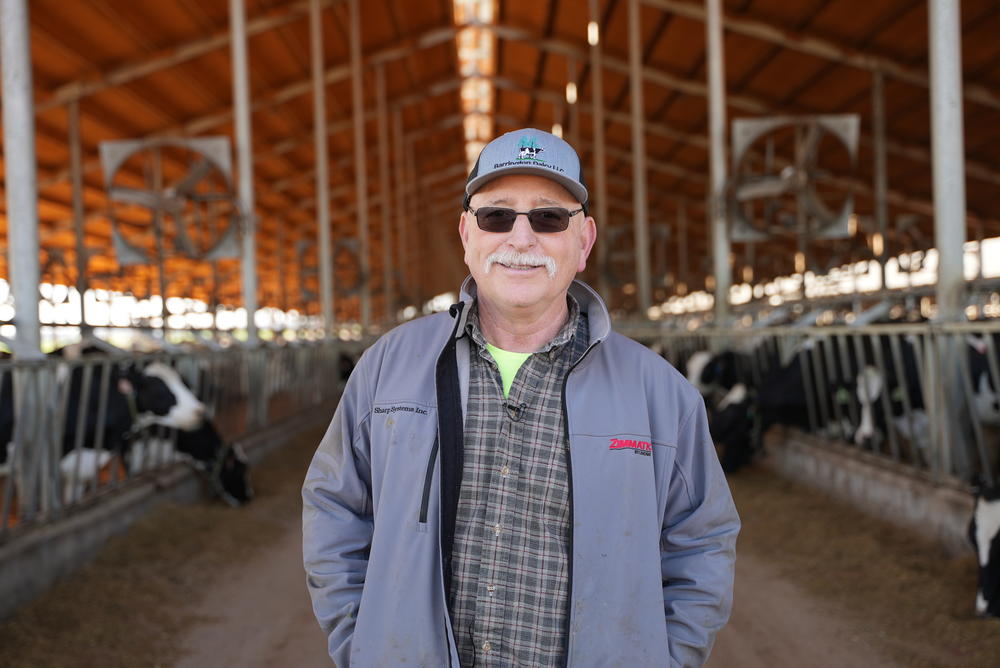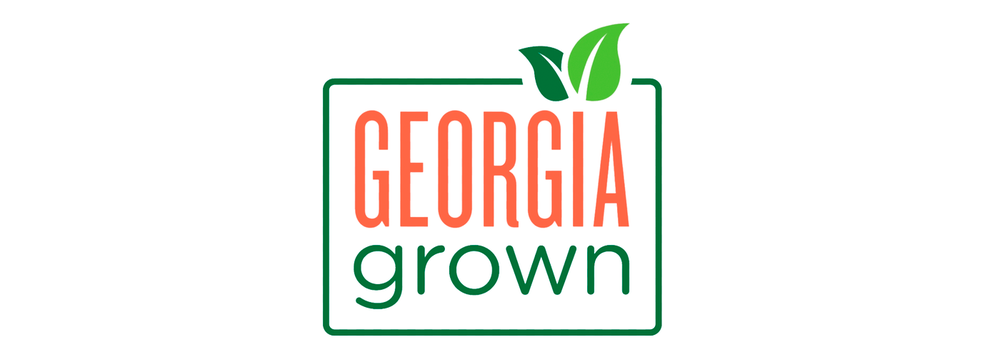
Section Branding
Header Content
A Fork in the Road Podcast: Barrington Dairies and Centennial Farms
Primary Content
There's a good chance that the milk you bought at the grocery store this weekend(Yes, even at the big chains) came from a dairy farm in the middle of the state. And there is a very good chance that milk was processed in a facility located smack-dab in the heart of Atlanta. In this episode, we'll follow the milk truck from Montezuma to Midtown.

Pete Gelber: Our milk's gone to Kroger, Publix, Wal-Mart. You name it, it goes there. We we sell about 18% of the milk. I think 16 or 18% of the milk produced in the state comes from our dairy.
David Zelski: Milk. It comes from cows. Cows live on farms, and those farms are all far away from big cities. There's no way that the middle of Atlanta has anything to do with the milk you bought at the store this weekend, right? Wrong.
Theme Song: There's dirt on my hands, strong like a tree. There's roots where I stand.
David Zelski: I'm David Zelski, and this is the Fork in the Road podcast presented by Georgia Grown and the fine folks at Georgia Public Broadcasting. Each episode, we feature stories from Georgia's farmers, fishermen, merchants, artisans, chefs, and others who help provide Georgia Grown products to folks in the Peach State and beyond. Today, you're headed out for a little bit of a road trip following the milk truck. The first stop is Montezuma, Georgia. And where exactly is that? Pete, the owner of Barrington Dairies can give us an insight.
Pete Gelber: Montezuma, Georgia is pretty much the middle of nowhere, which is great for if you're if you want to be in the dairy business.
David Zelski: I guess that wasn't helpful. Well, Montezuma, Georgia is just a little bit southwest of the middle of the state. Basically, go to Perry and take Highway 224 West for about 15 miles. The second stop on this road trip will actually be in Atlanta. And I'm not talking somewhere in the Atlanta metro area. I'm talking smack dab in the middle of town. There is a dairy processing plant just south of Buckhead, not far from midtown and right next to Morningside. Yep. I didn't know that either. The start of this journey is back there in, quote, the middle of nowhere. It's his words, not mine, with Pete Gelber, the owner of Barrington Dairies.
Pete Gelber: And I've got kind of a different story. I'm from the Bronx in New York City, and my father wanted to keep me out of trouble as a kid and made me go work on a dairy farm in upstate New York. I went to Cornell University and majored in animal science, and I moved to Florida with my former boss and partner in 1990, and I was made a partner in the mid-nineties and I eventually bought out my other two partners and now myself and my family own and operate this dairy.
David Zelski: Now, did you have dairy farmer from the Bronx and educated at Cornell, living in Montezuma, Georgia, on your bingo card? Neither did I. Pete's experience at Cornell definitely comes into play with how Barrington Dairies operates.
Pete Gelber: Okay. Well, if you look right by us, we have all our cows have Fitbits. You look at that collar around their neck and it measures how many times the rumen contracts in in a day. And it will also counts how many steps the cow takes and it will send. Tell us if the cow is in heat, there's an algorithm. It tells us if the cows in heat, if she needs to be bred, and also tells us if she's not feeling well and it will send herdsmen in charge of each barn a text to tell them which cow needs attention.
David Zelski: Pete and his team are using technology to make your milk better.
Pete Gelber: There's just a lot of science. I think a lot of people have a lot of skepticism about science when it comes to their food. They everybody uses science to live longer, and we use science to drive a better car, a safer car. I think that science and food is, for the most part, is a tremendous thing. And we have billions and billions of people in this world and we need to feed them. And we can do it as long as we have our science to do it. For instance, right now, with our breeding of our herds, we can we take DNA samples out of every calf and we know which calves are going to be healthier as cows, which ones are going to produce more milk and which cows are going to get pregnant easier. So more easily, I should say. And things like this. So without with less antibiotics and and a lot less interference, we can make more milk from a healthy cow just because we know which cows are going to be the healthy ones to raise.
David Zelski: The cows seem pretty happy here. They seem to be enjoying themselves in this environment. Why is that?
Pete Gelber: So, I always say there's three kinds of cows, three kinds of you got you got the Hilton, you got the Motel 6, and then you got the cow has to sleep under the bridge. So we try to make our cows give them the Hilton experience. If you can see behind me, we have these cows that can walk around and they can eat whenever they want to drink whenever they want to, and they lay in a sand bed, which is the gold standard. It's like going to the beach. You lay in the sand, you don't lay in the grass. And the other thing is, is they're out of the weather. So the same people that, sometimes you have these animal rights activists, the same ones that want you to keep your dog in the house on a cold night or a hot night, want the cows to be outside in the rain and sleet, and the hot weather all the time. So we believe that we do a better job keeping our cows in and we care for them. They walk on rubber rubber mats all the way to protect their feet, and they reward us by producing a lot of milk. Right now, this herd right here is averaging over 12 gallons a day, and it's because they're very comfortable. One of the most important reasons I enjoy my job is you get to wear a lot of different hats. And the science parts always fascinate me. A cow is a ruminant animal. And it's there's also some art, not just pure science in feeding a cow. And we have to take care of these cows. We have to keep them healthy. We got to keep their feet trimmed. And we have my wife is a veterinarian and we have five other veterinarians on staff at all times. And so we we feel that we can do a have expertise to take care of our cows, that a smaller herd doesn't have.
David Zelski: Barrinton Dairies takes very good care of their cows, and they need many vets on staff because there are a lot of babies being born at the dairy.
Pete Gelber: Yes, every cow has a baby every year, so we have over 12,000 babies get born. So if you do the math, it's it's a lot a day. So depending on the time of year, it goes from anywhere from about 55 to 25 a day. So it's the guys we have somebody taking care of the maternity ward. We have two people there, 24 hours, 7 days a week. And it's very important that that that cow gets special care that 24 hours before and the 24 hours after she calves and same with the calf. The calf needs to get the colostrum in her which is the mother's first milk which is a lot of antibodies and it's a calf that gets off to a good start, ends up having a better life than a cow that gets off a calf, that gets off to a poor start. Same as the way it is in humans. So it's if you get off to a good start and go to a good school, you're probably going to be a successful person. And so the calves need to need extra extra care.
David Zelski: And you can actually meet a baby cow from Barrington Dairies at the Georgia National Fair in Perry.
Pete Gelber: This is correct. We our cows are we supply to cows for the baby barn at the Georgia Fair, which is just 15 miles down the road. They asked me to do it several years ago. We gladly help out. And being that it's a large farm, it's easy for us to get cows that are going to calve that day because we have 30, 40 cows calving a day.
David Zelski: Very good. Tell me about where your milk goes.
Pete Gelber: Okay. So we sell milk to a co-op called Dairy Farmers of America.
David Zelski: So the milk can be can be sold in any grocery store?
Pete Gelber: So, yes, we would sell sold it depending on where the contracts are. With our co-op, our milk has gone to Kroger, Publix, Wal Mart, you name it. It goes there. We we sell about 18% of the milk, I think are 16 or 18% of the milk produced in the state comes from our dairy.
David Zelski: That's neat for people to know. You know, I don't think a lot of people when they go to Kroger, when they go to Publix, realize they're getting Georgia milk.
Pete Gelber: Right. That's very, very, very true. And and it's close and it takes us right now about two and a half hours, we make a load of milk. And I remember when I was a kid, it used to take us every three days. We'd send a pickup truck of milk cans into get processed. So there's a different meaning to farm fresh now than it was 50 years ago.
David Zelski: With those numbers, that baby cow you saw at the Georgia National Fair a few years ago might have made the milk you poured in your coffee this morning. That's kind of neat. Speaking of numbers, Pete mentioned each cow has a calf every year for a total of 12,000 per year. So that means they have 12,000 cows on the dairy. And those cows are producing, on average, 12 gallons of milk each day. That's 144,000 gallons of milk or about 18 tanker trucks full. Remember, this is a road trip. So hop up here in the cab because we're heading to Atlanta. The next stop is Centennial Farms Dairy, smack in the middle of Atlanta. We're less than four miles south of the high end shopping in Buckhead, about six and a half miles north of Mercedes-Benz Stadium, just off Cheshire Bridge Road in Atlanta. This is where the milk from Barrington Dairies is processed. And I'm glad that Lamont is here to give us a simple explanation of what that means.
Lamont Ellis: Basically controlling our raw milk that comes from the receiving. Send it to a pasteurizer out to a pasteurized tank. From there for the public to enjoy in our stores.
David Zelski: That's perfect. So what are you looking for when you're. When you're going in here?
Lamont Ellis: Coming in here to. From what our scheduled product. Skim 1% homogenized milk chocolate. Come in here we program it all in this screen right here. How many ever gallons is on our schedule? And we will input that information on a computer and basically go from here to the whatever pasteurized tank throughout the plant that we selected to go to. And we'll just watch it until it's finished. Then we'll get a final check, make sure that we have our butter fats within the required range and we release it to the lab and from there they'll release to the filler opperators to put it in the bottles.
David Zelski: To make sure that you and I are on the same page. Let's take a quick look at the International Dairy Foods Association Web site. The original method of pasteurization was vat pasteurization, which heats up milk or other liquid ingredients in a large tank for at least 30 minutes. It is now used primarily in the dairy industry for preparing milk for making starter cultures in the processing of cheese, yogurt, buttermilk, and for pasteurization some ice cream mixes. The most common method of pasteurization in the United States today is high temperature, short time (HTST) pasteurization, which uses metal plates and hot water to raise milk temperature to at least 161 degrees Fahrenheit for not less than 15 seconds, followed by rapid cooling. Remember back on the farm when Pete said this about science?
Pete Gelber: Yeah, there's just a lot of science. I think a lot of people have a lot of skepticism about science when it comes to their food. They everybody uses science to live longer, and we use science to drive a better car, a safer car. I think the science of food is, for the most part, is a tremendous thing. And we have billions and billions of people in this world and we need to feed them and we can do it as long as we have our science to do it.
David Zelski: Well, Mohammad is using some of that science in the lab at Centennial Farms.
Mohammad Mohammad: This is called the somatic cell machine, where it counts, like how many butter fat, how many cells is in a in a milk. And this is where we test it at. Miss Deborah is working on milk right now and you can see that. This is the lactoscope where we check the butterfat of the milk and everything. And this is the Horiba which which takes the homogenized of the milk. Right here we have the micro room. This is the micro room. This is where we incubate everything we like to see. This is the plates that's done. This to stressed SPCs. They'll be ready tomorrow. This will be the day after. This is going to be ready tomorrow as well. We read it, we record it, we put it in a computer.
David Zelski: So you're incubating. So what are you incubating here?
Mohammad Mohammad: We get a sample of the milk to make sure nothing is growing on it. And we give it a we do this stress, which means like you stress the milk, like you keep it in a regular temperature, 45 degrees. I'm going to show you in a fridge in a little bit. You keep it up there and basically like that, basically like shows like we have you go to a store, grab the milk, put it in your trunk, or you drive your car around basically. And that's how we do it.
David Zelski: So no milk goes out till it goes through that incubator.
Mohammad Mohammad: No milk goes out till we check everything and make sure everything is like processed good and everything's good and no bacteria. So nothing is happening.
David Zelski: Now that the milk has been processed, there's only one thing left to do. Put it in the jug, Ahmed explains.
Ahmed Amin: So we have four machines. Three normal gallons and one half gallon. Each one of them runs about 33 bottles a minute. So let me show you how we process those bottles. So yeah, one minute. So each bottle we make from the resin. Small resins they come through the line, and here is the mold. That's where they're gonna get blown, through the mold. Then they go to the cooling vat. Once they go through the cooling vat they're going to come down here. They're going to go to the trimmer. So let me show you. You see it has angel wings, flaps, and tail? So in the process of trimming, we're going to take off the tail, take the angel off, and the flaps. So you can see the gallon. Also we have leak detectors. It blows the air and see if there are any leaks from the bottom. If it is a bad bottom we're going to recycle it again.
David Zelski: It's so loud in there. But as you should have been able to hear from, Ahmed the milk jugs start out as small pieces of resin. They then go through that super loud blow molding process. They're trimmed and then filled with delicious fresh milk. Now it's on to the truck, out to the grocery store and into your morning coffee, bowl of cereal, or homemade milkshakes.
For more stories like this one, you can watch A Fork in the Road on GPB-TV or any time on the GPB.org website. GPB.org/Podcasts is where you can listen to and subscribe to this podcast or download it on your favorite podcast platform.
I'm David Zelski. Thanks for listening to A Fork in the Road.
The A Fork in the Road TV show airs Saturdays at noon and Sundays at 6:30 a.m. on GPB-TV. Check your local listings for other replays throughout the week and watch all episodes anytime at GPB.org/ForkintheRoad. Please download and subscribe to the Fork in the Road podcast at GPB.org/ForkintheRoadpodcast or on your favorite podcast platform as well.







